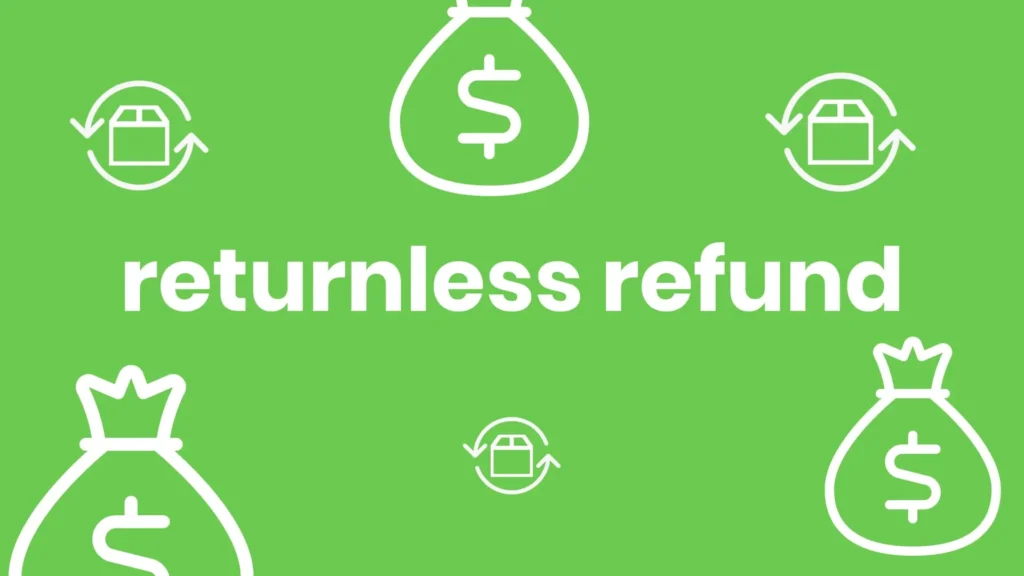Understanding Amazon Returnless Refunds for FBA and FBM Sellers
Amazon’s returnless refunds have become a game-changer for FBA (Fulfilled by Amazon) and FBM (Fulfilled by Merchant) sellers. This policy allows sellers to issue refunds without requiring the customer to return the product, enhancing the shopping experience while potentially impacting sellers’ operations. In this article, we at The We One delve deep into the nuances of this policy and explore how it integrates with Amazon’s broader seller responsibilities, including Amazon Seller Central user permissions, FBA duties, SFP comparisons, and custom product management.
What Are Amazon Returnless Refunds?
Amazon’s returnless refunds are designed to streamline the refund process. This policy enables sellers to refund the buyer without needing the product back. While it benefits customers by saving time and effort, it also aids sellers by avoiding the logistics of processing low-cost or damaged items that are unsellable.
For sellers, this is a double-edged sword. Returnless refunds work best for inexpensive items, defective goods, or products that may incur higher return shipping costs than their value. Sellers can customize their returnless refund rules through Amazon Seller Central, setting parameters like price thresholds, specific product categories, or conditions.
Amazon Seller Central User Permissions: A Crucial Component
To efficiently manage returnless refunds, sellers must optimize their Amazon Seller Central user permissions. These permissions ensure that the right individuals in your team can oversee refunds and returns while maintaining data security.
Key User Permissions to Set:
- Return Management: Grant this permission to team members who handle refunds and customer service to implement returnless refunds.
- Reports and Analytics: Ensure access for those who analyze return patterns and financial impacts.
- Account Administration: Assign to senior managers who set overarching policies, including returnless refunds.
Customizing these permissions not only enhances productivity but also ensures your team operates securely and effectively within the Amazon Seller Central framework.
FBA Seller Responsibilities and the Role of Returnless Refunds
For FBA sellers, Amazon handles returns and customer service. However, integrating returnless refunds comes with specific responsibilities:
- Cost Analysis: Assess if refunding without a return saves more than processing the product back to the warehouse.
- Inventory Management: Account for items that are refunded but not returned.
- Customer Satisfaction: Monitor feedback and ensure the policy improves customer retention.
The returnless refund option can significantly reduce the operational burden for FBA sellers while enhancing the customer experience. However, it requires careful planning to avoid unnecessary losses.
FBM Sellers: Returnless Refunds and Unique Challenges
For FBM sellers, the onus of managing returns lies entirely with them. Returnless refunds can simplify this process but come with additional considerations:
- Shipping Costs: For items with high shipping fees, returnless refunds may be more cost-effective.
- Damage Assessment: Implement strict guidelines to determine when a refund without return is appropriate.
- Automation: Use Amazon Seller Central settings to automate refund policies for specific SKUs or categories.
FBM sellers must weigh the benefits of enhanced customer satisfaction against the potential for misuse of the returnless refund policy.
Comparing FBA and SFP: What Sellers Need to Know
When considering returnless refunds, sellers often debate between FBA and SFP (Seller Fulfilled Prime) models. Here’s how they stack up:
| Feature | FBA | SFP |
|---|---|---|
| Return Management | Handled by Amazon | Handled by Seller |
| Prime Eligibility | Automatically eligible | Seller must meet strict standards |
| Cost Implications | Higher fulfillment fees | Potentially lower fees, but higher workload |
| Returnless Refunds | Easily integrated | Requires manual setup |
For sellers who prioritize convenience, FBA might be the better choice. However, SFP offers more control, particularly for custom or high-value products.
Amazon Custom Products and Returnless Refunds
Sellers dealing with Amazon custom products face unique challenges. Custom items, such as engraved goods, often cannot be resold after being returned. In such cases, implementing returnless refunds makes sense to minimize losses and enhance customer satisfaction.
Best Practices for Custom Products:
- Clear Policies: Clearly communicate refund eligibility for custom orders in your listings.
- Photo Proof: Request photos from customers to verify issues before processing a refund.
- Automated Rules: Use Amazon Seller Central to automate returnless refunds for specific custom SKUs.
These measures can help balance the need for customer satisfaction with the protection of your profit margins.
Mastering Amazon FBA Seller Duties
For FBA sellers, understanding and managing responsibilities is critical to success. This includes inventory management, pricing strategy, and now, the effective use of returnless refunds. By leveraging Amazon’s tools and analyzing return data, FBA sellers can streamline their operations while maintaining profitability.
Conclusion
The introduction of Amazon returnless refunds marks a significant evolution in customer service for both FBA and FBM sellers. By understanding this policy, optimizing user permissions in Amazon Seller Central, and tailoring strategies for custom products, sellers can boost customer satisfaction and streamline their operations.
At The We One, we are committed to helping sellers navigate these complexities. Whether you are comparing FBA and SFP, managing custom product returns, or refining your Amazon FBA seller responsibilities, implementing returnless refunds effectively can be a competitive advantage.


